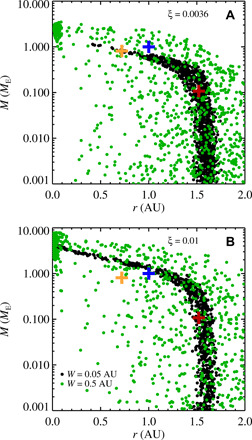Fig. 5. Monte Carlo sampling of 1000 protoplanets starting with initial masses of M0 = 10−3 ME at random times between 0.5 Ma and 5 Ma.

The black dots show results for a planetesimal belt of width W = 0.05 AU, while the green dots show results of a width of W = 0.5 AU. The protoplanets are started at random positions within the planetesimal belt. (A) Results for a pebble-to-gas flux ratio of ξ = 0.0036, as in Fig. 4. The narrow belt case faithfully reproduces the characteristic masses and orbits of Venus and Mars. Considering instead a wider planetesimal belt leads to the formation of massive planets that migrate to the inner edge of the protoplanetary disc. (B) Results for a higher pebble-to-gas flux ratio of ξ = 0.01. Venus is now well below the growth track, while planets in the Mars region grow to ≈ 0.5 ME before migration becomes important. The high pebble flux allows super-Earths of up to 10 ME to grow and migrate to the inner edge of the protoplanetary disc.
